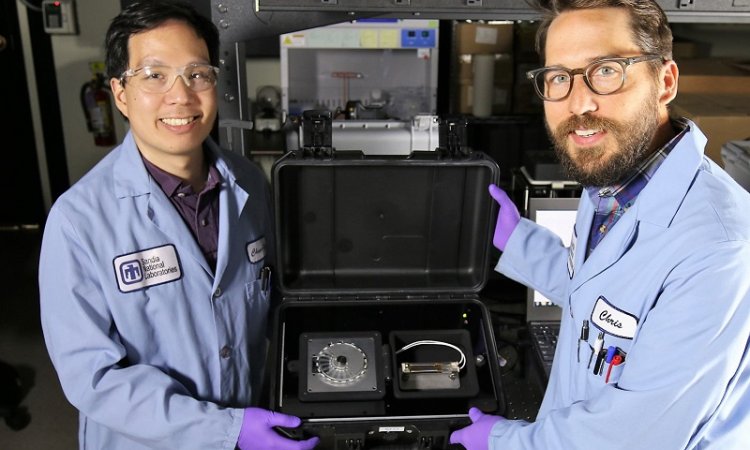Bacterial or viral? – Name it! Beat it!
Laboratory markers in paediatric febrile infections
The smaller the child, the more defenceless it is against viral and bacterial attacks. That is why infection accompanied by the symptom of a high temperature is the most common illness in children. So, when a child has a runny nose and fever an infection is clear. The more elemental question is: Should it be treated with antibiotics?

Laboratory markers are a useful diagnostic tool to separate febrile infection into viral and bacterial pathogens. ‘Only a differential diagnosis can lead to differential treatment’, says Professor Nikolay Mayanskiy, Head of the Laboratory Department at the Scientific Centre for Children's Health in Moscow, Russia. ‘About 70-75 % of febrile infections are viral, so only 20-25 % is bacterial and needs to be treated with antibiotics. The biggest problem in a clinical approach is fever without a source. Therefore, laboratory markers are a great help for differential diagnosis, prognosis and follow-up.’
A lesson in paediatric laboratory medicine to be learned is that children are not small adults. In a medical sense, this means they are more unpredictable patients than adults. They can either recover from an infectious disease much faster than grown-ups, or develop severe complications more suddenly and unexpectedly, with only a few prognostic symptoms. This is also true in testing for laboratory markers. The fluctuations in these markers, such as C-reactive protein (CRP) and Procalcitonin (PCT), are much higher in children, so the specificity is sometimes not very high in this patient group. ‘That’s why we need additional markers,’ Prof. Nicholay Mayanskiy points out. ‘The use of a complex of different markers to estimate several different parameters appears to be the best way to gain the whole picture of information leading to certainty in the diagnosis of a febrile infection condition. In our institute, we are presently evaluating such a laboratory score. We have already developed a database from several hundred paediatric patients. I hope to present the first results of our study analysis at IFCC WorldLab 2011.’
Prof. Mayanskiy and team are also trying to find new differential markers for bacterial and viral infections. ‘With advanced haematological analysers we can test for additional information in complete blood count (CBC). An increase in lymphocytes as an indicator for viral infection, or neutrophil granulocytes as an indicator for bacterial infection, are not very specific markers alone. Sensitive additional tools analysed by modern technologies can measure, for instance, the concentration of haemoglobin in reticulocytes (erythrocyte precursors).’ The technical development of better analysers is also beneficial to paediatric lab testing, especially in the neonatal field because it takes smaller blood samples to screen for more parameters.
Another challenge in paediatric laboratory testing is the different physiological processes in children. To interpret their results adequately, specific age and gender haematologic and biochemical reference intervals are needed. Particularly for emerging markers there is only scarce data available in paediatrics. However, because this reference range can only be characterised among healthy children’s blood serum, it is difficult to collect data for ethical reasons.
Prof. Mayanskiys Institute is collaborating with the Canadian Laboratory Initiative on Paediatric Reference Interval Database (CALIPER) to establish reference intervals according to CLSI/IFCC C28-P3 guidelines by the Robust statistical method.
As an international expert at the IFCC WorldLab session ‘Current challenges in the paediatric laboratory’, Prof. Mayanskiy will discuss ‘Laboratory markers for differential diagnosis of febrile infections in children’ on 19th May, in Berlin.
Text: Karoline Laarmann
28.02.2011











